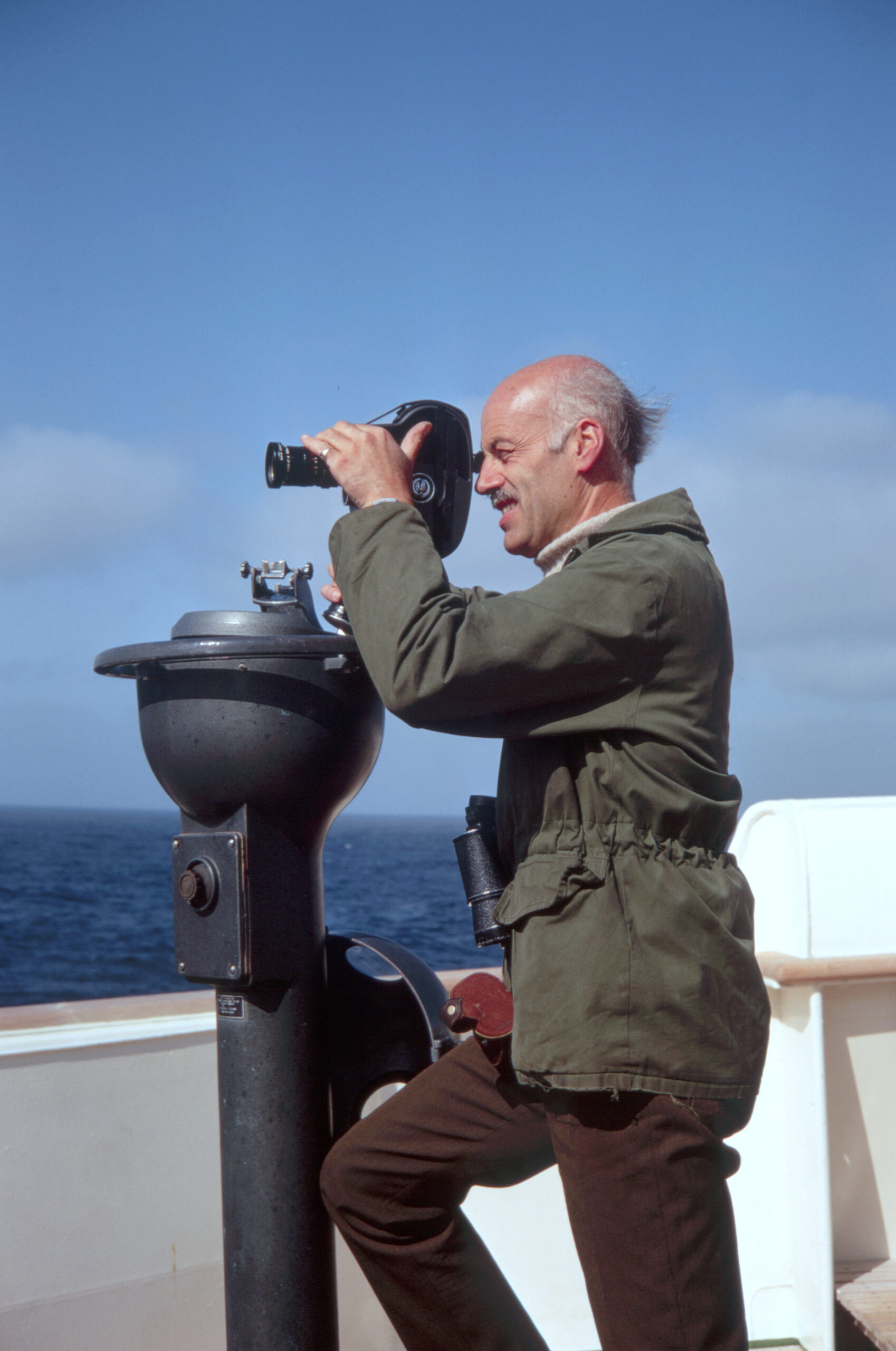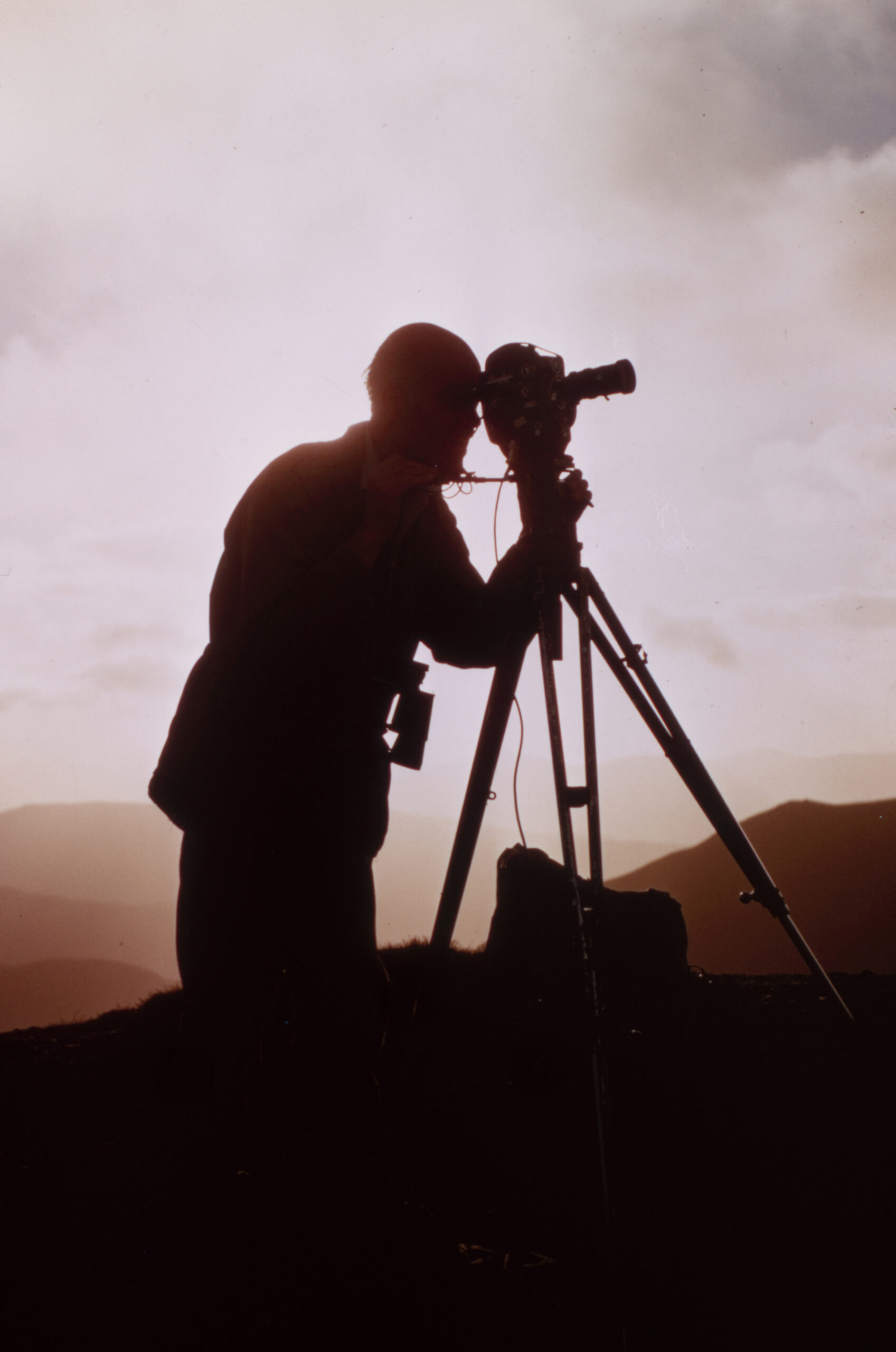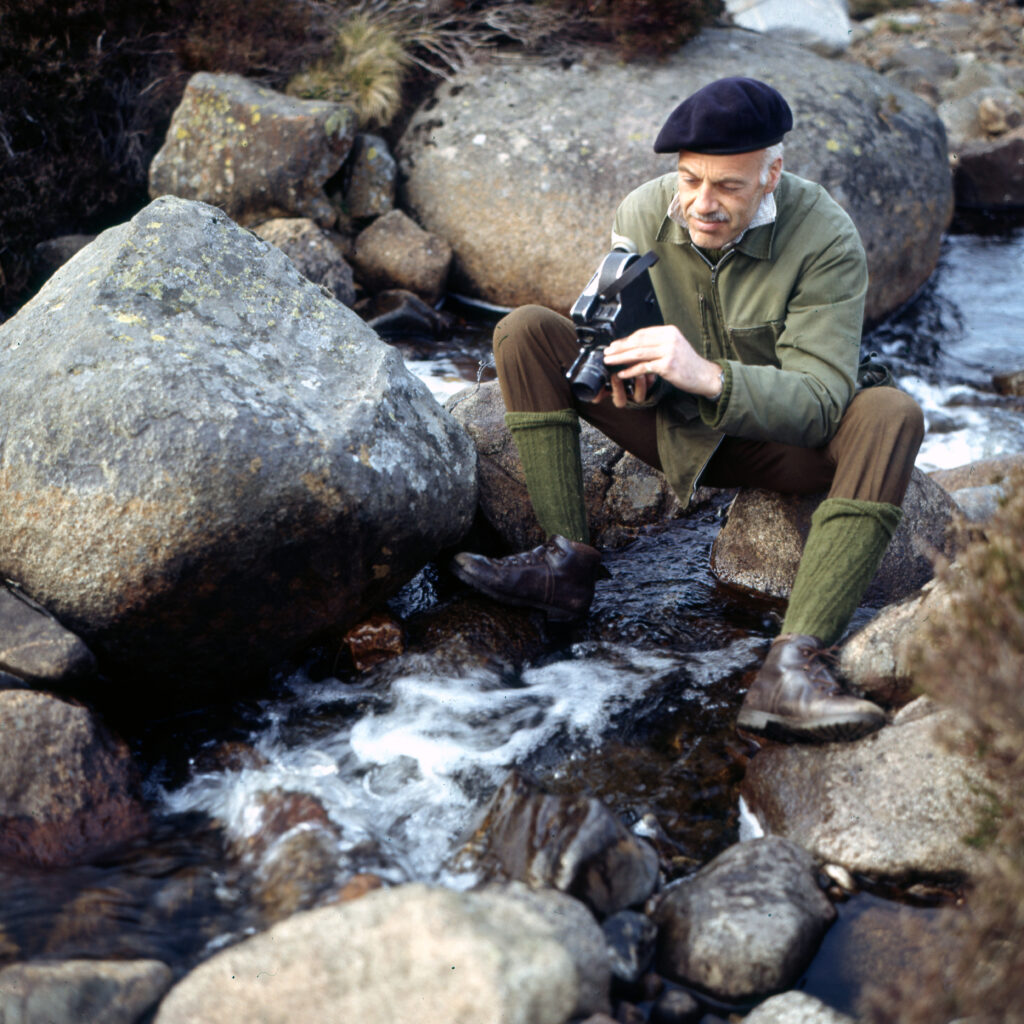
Christopher K Mylne was born in Dalhousie Castle, near Bonnyrigg, Midlothian, in 1927. His father, Kenneth Macnaghten Mylne, was one of seven sons of Bishop Louis Mylne, all of whom had served in the First World War. After the war ended, KMM rented the castle and established a boys’ preparatory school there with his wife Dorothy. Chris was the fourth of their five children.
Chris’s own school education was at Cargilfield Preparatory School, Edinburgh and Sedbergh School in Cumbria, where his interest in bird photography began – including by photographing buzzards on local crags with a “box brownie” camera. Although too young to fight in the Second World War, he was enlisted as an officer cadet in the Royal Signals, as part of which he studied maths and physics at Oxford University immediately after the war. After his demobilisation he went to St John’s College Cambridge to study Classics and English, where he also became President of the Cambridge University Bird Club and organised field trips to Norway.
His early career was in teaching and, after qualifying from Moray House, he took a job as a Classics master at John Watson’s School in Edinburgh.
In 1954, he was accepted for the post of teacher and lay missionary on the remote Shetland island of Foula. This was a life-changing experience, which he later recounted in his book Foula: The Time of My Life. As well as teaching the handful of children in the island schoolroom, he was expected to deliver sermons and conduct funerals in the kirk, and become part of a tight-knit island community which relied on crofting, fishing and digging peat for survival. The appointment also involved operating a sub-station of the Fair Isle Bird Observatory on Foula to study migratory birds, and it was on the island that he made his first cine film using a borrowed camera. Although he was forced by ill-health to leave Foula after only 18 months, he maintained connections with the people there for the rest of his life and re-visited the island a number of times.
After his return to Edinburgh, and a brief further spell as a teacher at his father’s school, he was employed by the RSPB as a one-man Film Unit. In this capacity he was expected to make enough films each year to generate a full programme at venues such as the Royal Festival Hall in London and the Usher Hall in Edinburgh. He also married and had two sons. In 1963, he became Principal Field Officer for the National Trust for Scotland, which included lecturing on Trust cruises. Three years later, he went freelance and for the remainder of his career, made films largely on his own or with minimal assistance. Usually, he was the cameraman, sound-recordist, editor, director and producer, and often the script-writer and commentator as well. He is probably best-known for films about St Kilda and Fair Isle, films about birds (such as Proud Predators) and films made for conservation bodies such as the National Trust for Scotland (Scotland: A Heritage) and The Scottish Wildlife Trust (A Place for Wildlife). Many of his films were shown on television (including The Remarkable Willow-Grouse), and he presented many wildlife-themed educational TV programmes.




Scottish islands and Scottish wildlife were also the main subject of his stills photography. He was one of the first people to photograph ospreys at Loch Garten when they returned to Scotland in the 1950s. He spent many days on the shore of Linlithgow Loch with his long lens set up on a tripod trying to capture the complex displays of great-crested grebes. Other subjects included landscapes, natural patterns and the birds in his garden.

As well as photographing wildlife, Chris was passionate about conservation and the protection of the natural world. There was usually an environmental message in his films, long before this was a mainstream concern. Respect for the natural world was also a key theme in the many lectures, film-shows and slide-shows that he gave, and the many articles and letters that he contributed to newspapers and magazines. For many years he was on the board of the St Andrews Animal Fund and Friends of the Earth Scotland, and he supported many other charitable causes.

Chris lived for most of his life in Linlithgow, where he and his second wife were active in the local Oxfam group, and won an award for their wildlife garden. He moved into care in Edinburgh shortly before his death in 2018.